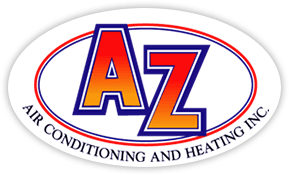
You shouldn’t be forced to sacrifice comfort or empty your wallet to keep your home at the right setting during warm days.
But what is the ideal setting, exactly? We discuss recommendations from energy specialists so you can find the best temp for your family.
Here’s what we suggest for the most energy-efficient setting for air conditioning in Los Angeles.
Recommended Thermostat Settings for Summer
Most households find setting the thermostat at 72-73 degrees is most comfortable. However, if there’s a major difference between your indoor and outdoor temps, your AC expenses will be greater.
These are our recommendations based on the U.S. Department of Energy (DOE) and ENERGY STAR®.
While at home: 78 degrees. While that seems warm, there are approaches you can keep your house refreshing without having the AC going frequently.
Keeping windows and curtains closed during the day keeps chilled air where it belongs—within your home. Some window solutions, like honeycomb shades or plantation shutters, are designed to give extra insulation and better energy efficiency.
If you have ceiling fans in your residence, the DOE says you can increase thermostat temperatures about 4 degrees warmer without sacrificing comfort. That’s since they freshen by a windchill effect. Since they cool people, not areas, shut them off when you move from a room.
If 78 degrees still seems too uncomfortable initially, try doing an experiment for about a week. Start by raising your setting to 78 degrees while you’re at your house. Then, steadily turn it down while adhering to the ideas above. You might be amazed at how comfortable you feel at a higher temperature setting.
While away: 88 degrees. There’s no reason to keep the air conditioner going all day while your home is vacant. Switching the setting 7–10 degrees warmer can save you an estimated 5–15% on your electricity costs, according to the DOE.
When you arrive home, don’t be tempted to switch your thermostat colder than 78 to cool your home more rapidly. This isn’t effective and usually produces a more expensive cooling bill.
A programmable thermostat is a helpful method to keep your settings under control, but you need to set programs. If you don’t use programs, you run the risk of forgetting to move the set temperature when you go.
If you’re looking for a convenient solution, think over installing a smart thermostat. This thermostat connects with your phone, so it is aware when you’re at home and when you’re away. Then it automatically changes temperature settings for the biggest savings. How much exactly? Typically $180 annually on heating and cooling, according to ENERGY STAR.
Another perk of having a smart thermostat? You can use your phone to keep an eye on and regulate temperature settings from nearly anywhere.
While sleeping: Around 70 degrees. While ENERGY STAR advises 82 degrees, that may be unbearable for the majority of families. The majority of people sleep better when their bedroom is chilly, so that’s why the National Sleep Foundation recommends 60–67 degrees. But that may be too cold, depending on your clothing and blanket preference.
We recommend trying an equivalent test over a week, moving your temp higher and progressively turning it down to locate the right temperature for your house. On mild nights, you may find keeping windows open at night and relying on a ceiling fan is a preferable option than running the air conditioning.
More Approaches to Save Energy During Hot Weather
There are other approaches you can save money on cooling bills throughout hot weather.
- Buy an energy-efficient AC system. Central air conditioners only work for about 12–15 years and get less efficient as they get older. An updated air conditioner can keep your residence cooler while keeping electrical bills small.
- Set yearly air conditioner tune-ups. Annual air conditioner maintenance keeps your system working like it should and could help it run more efficiently. It might also help extend its life expectancy, since it enables professionals to spot seemingly insignificant issues before they lead to a major meltdown.
- Switch air filters often. Read manufacturer instructions for changing your air filter. A dusty filter can cause your system to short cycle, or turn on and off too often, and increase your electricity.
- Measure attic insulation levels. Almost 90% of houses in the U.S. don’t have adequate insulation, according to the Insulation Institute. The majority of southern climates need 13–14” of attic insulation, while northern climates require 16–18”.
- Have your ductwork checked. Ductwork that has separated over time can leak conditioned air into your attic, walls or crawl space. This can result in big comfort troubles in your house, like hot and cold spots.
- Seal cracks, doors and windows. Keep warm air where it belongs by closing cracks. You can also caulk or weather strip doors to seal more cool air indoors.
Save More Energy During Hot Weather with AZ Air Conditioning and Heating
If you need to save more energy this summer, our AZ Air Conditioning and Heating experts can provide assistance. Get in touch with us at 800-296-5088 or contact us online for extra details about our energy-saving cooling solutions.
